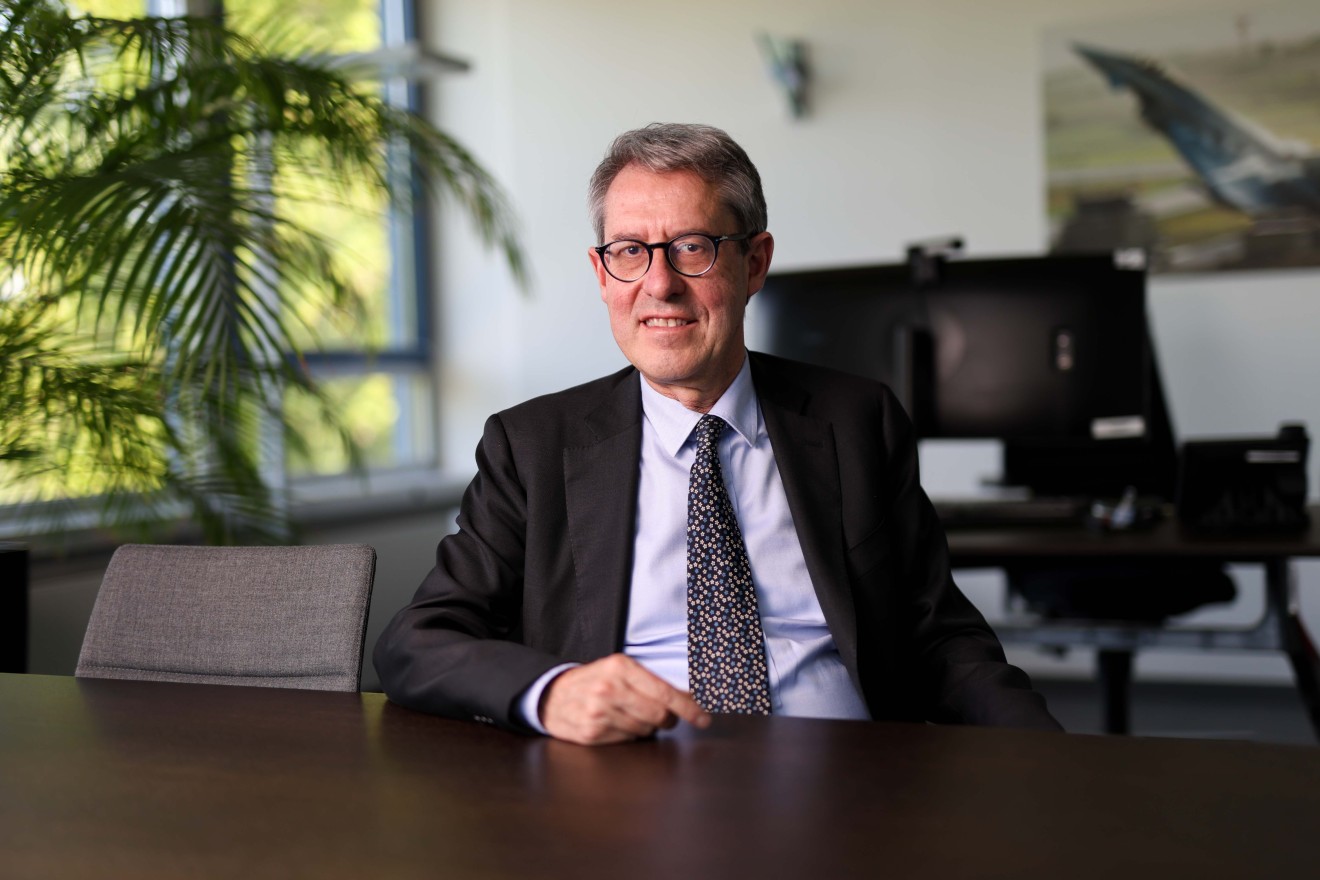You’ve been part of the Eurofighter programme before — how does it feel to be back?
I am very proud and honoured to be back in the company as CEO. I am also very excited about the challenges ahead because this is a pivotal moment for the Eurofighter Programme.
This is the most successful European defence collaboration. Not only it has delivered the best swing-role aircraft to defend Europe’s skies, but it has also brought significant benefits to aid the development of European advanced technologies and contributed to the education of many highly skilled workforces.
What experience do you bring that will benefit the programme?
I have a good understanding of the Eurofighter Programme. I was the Eurofighter Programme Director in Leonardo after we signed the Kuwait export contract as Prime Contractor Organization. As well as my experience as Chief Operating Officer of Programmes since 2019 to 2021, I have also been a member of the Supervisory Board of Eurofighter GmbH. I know the strengths of the Eurofighter Programme and the challenges it is facing today.
How do you see the status of the Eurofighter programme?
Typhoon was designed to defend the skies of Europe with a remarkable growing capacity. Today, after the Russian invasion of Ukraine, Typhoon is still the backbone of the European air defence. It continues to play a major role in NATO air policing missions in Eastern Europe and in the Middle East operations against DAESH.
In 20 years we have delivered 589 aircraft to nine customers and flown almost 800,000 hours. With an order backlog of 681 aircraft so far we foresee an operational life for Typhoon up to 2060.
Initially designed as an air superiority platform, the weapon system has evolved significantly thanks to a number of Enhancement Packages developed by the Eurofighter consortium. The integration of new missiles, weapons and sensors has made Typhoon the best swing-role platform in Europe enhancing air-to-air and air-to-surface capabilities and mission lethality.
Furthermore, the new E-Scan Radar has now entered into Service with the Kuwait and the Qatar Air Force. But, the need to evolve to stay operationally effective never stops and we have significant challenges in front of us.
What are these challenges?
The main one is to keep Typhoon operationally effective at least until 2060 in a context where the geo-political scenario is rapidly changing, new technologies are emerging and our Core Nations are working on two different sixth generation programmes.
It is a fact that the new scenario in Europe has had a huge impact on the military strategies and the respective needs of our customers.
Our first priority is to provide our customers with top-class support to the fleet and foster quick embodiment of the new capabilities made available by our development projects.
It is a fact that Typhoon, at this stage of its life-cycle, needs a mid-life update. In our view this will not be a simple technological refresh, but will define the path towards a Long Term Evolution that will bridge the gap to the 6th Generation Fighters in Europe.
Eurofighter and our Partner Companies across Europe have already started initial studies and we are expecting to launch a Technology Maturation Phase with Core Nations early in 2024.
The development of FCAS and GCAP, two sixth Generation Fighter Programmes in Europe, is certainly not helpful. This is one of the factors that foster different requirements and ambitions among our Core Nations, but I believe that the legacy of Eurofighter and the operational needs of our Customers will be strong counter-factors to keep the programme common and progress Eurofighter upgrades for the benefit of all its Customers.

How confident are you that the future capability roadmap is in place and can be achieved?
The Eurofighter has a common capability roadmap that is well defined in our 10-year plan. This was recently endorsed by the Eurofighter Ministerial Meeting in Milan.
The plan encompasses the current contracted work up to P3Ec Step 3, the further upgrades to be integrated in the 4th Enhancement Package (P4E), including the integration of Radar MK2 and the German Electronic Warfare requirement and the route to the Long Term Evolution.
This plan is an important tool for the Nations to plan their funds and for industry to plan needed assets and resources. The plan is continuously monitored and upgraded through the governance process that Eurofighter and NETMA have established with Partner Companies and Nations.
There are real opportunities for additional orders both from Core Nations and from the Export market.
What are the prospects for the programme in terms of further orders — are you optimistic?
Yes. In fact, I am very optimistic and the Consortium needs to get ready to support significant additional orders over the next two years.
There are real opportunities for additional orders both from Core Nations and from the Export market. With the latter, we have good opportunities to broaden our customer base and to increase the Eurofighter fleet size of our current Middle East customers.
In Eurofighter GmbH we will fully support our Partner Companies acting as Prime Contractor Organizations on the Export Market and we will be ready to meet these demands, if and when, they come. This means being ready to offer the best available capabilities, being ready to sustain the necessary production rate and offer competitive support packages.
What are the key tasks facing you that are in your inbox as take up the CEO role?
I would summarize them in four main tasks: coordinate the effort to catch additional orders and be prepared to meet the consequential demand, deliver the 10-year plan for Capability development and fleet embodiment, be focussed on through-life support to enable mission readiness in operational scenarios and finally, maintain attention on the enterprise performance.
These are the commitments industry took at the last Ministerial Meeting. But I would like to add another one: promote the strengths of the Eurofighter model and in particular the spirit of collaboration that characterizes this consortium. This is the most important legacy of this programme.
